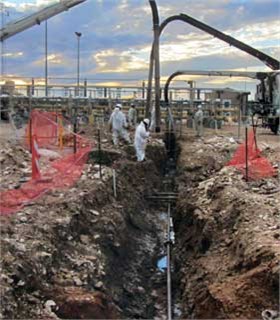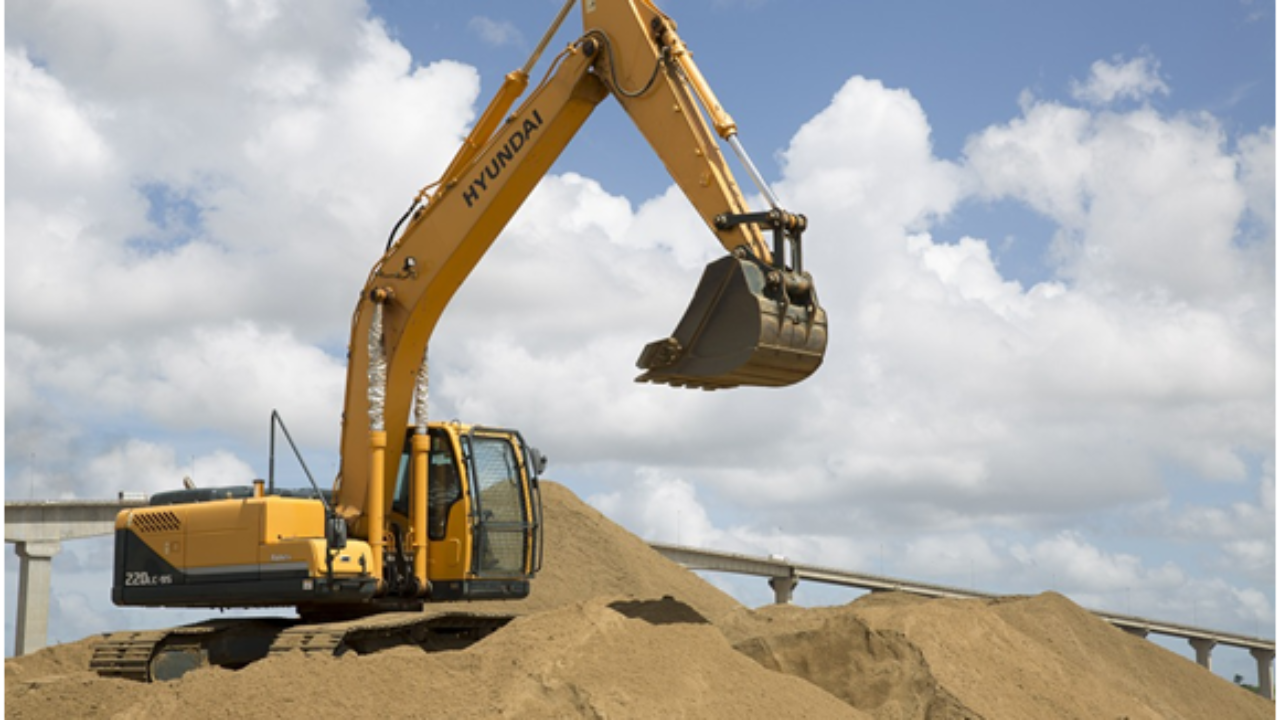Excavation Companies Fundamentals Explained
Wiki Article
The Buzz on Excavator
Table of ContentsGetting My Excavator To WorkThe Of Grading ContractorsMini Excavator Can Be Fun For AnyoneHow Excavation Contractors Near Me can Save You Time, Stress, and Money.The 8-Minute Rule for Concrete Contractors


Scrapers or Pans excavate soil in one location, haul and also dump the soil in an additional spot (concrete contractors). It is challenging to match the performance of scrapes for cut/fill dirt operation if the haul distance is less after that a mile. Scrapes are typically pulled by a rubber tire wheel tractor and are often pressed with the cut area by a bulldozer.
There are many times that scrapes are not used for website grading and also a dump vehicle is utilized: the haul may be to long, the haul might go across roadways where scrapers are not allowed, acid rock may be run into, equipment accessibility, etc. Unload vehicles remain in common use as well as most likely need little discussion.
"Rock body" beds, on the other hand, have no tailgates and also can discard any type of dimension rock, although their quantity capacity is lessened. Compaction Tools boosts the density of the dirt as well as in some situations offers a smooth, rolled surface.
How Excavation Contractors Near Me can Save You Time, Stress, and Money.
From a basic test pit to percussion boring to core drilling the owner has progressively much more expensive options that generate progressively much better data about the website underground. The Proprietor on a 100,000 SF building task may accredit twenty uninteresting locations with split spoon dirt samples taken until rock is gotten to as well as then core samples of rock.Understanding the kind as well as quality of rock (from the core examples) and area of rock (from the dirts boring) is a real benefit in jobsite planning. Conversely, the Owner of a 100,000 SF structure may determine to proceed with no geotechnical screening whatsoever. The decision regarding geotechnical screening is generally made by an Owner without any input from the Construction Manager.
A knowledge of the approximate place of the rock assists the Construction Supervisor to intend the series of steps complying with rock excavation. If rock is in one edge of a huge building task, for instance, the earth excavation could begin at the contrary end of the structure in order to start foundation job soonest.
Starting the foundation work early would be a good suggestion if the rock could be removed by ripping. Nonetheless, if the rock is extremely difficult as well as calls for substantial blasting, it might be prudent to hold structure job till the blasting is completed. The Building Manager must work more helpful hints with these kinds of decisions and use all the technical day offered.
The smart Trick of Concrete Contractors That Nobody is Talking About
Unidentified excavation stipulates that all rock or various other unexpected products (excluding dangerous products) experienced in the sitework will certainly be the responsibility of the Specialist at no adjustment in contract expense. An unidentified excavation is simpler from a book-keeping point ofview and puts the duty for geotechnical conditions onto the Sitework Professional.It's incredible what a heavy rain can do to a construction project. Prior to the rain, the site may be dry, hefty tools efficiently moving earth, the various other professions efficiently performing their work.
In the majority of locations of the world, the Building Manager need to bear in mind a straightforward reality: IT WILL CERTAINLY RAINFALL. Great preparation can lessen the damage as well as interruption of a heavy rainfall to a jobsite. Often the excavation and grading is left to the Sitework Contractor (and also their Foremen is accountable to monitor and route the hefty devices and operators).
The Building and construction Supervisor must be continually mindful of what rain will certainly do to the project site. It is not uncommon for the Sitework Supervisor to work their hefty tools for maximum performance and also wish it does not rain. Among the very best ways to plan for rainfall is to slope all grades to drain and to smooth rolled the surface area prior to a rain.
The Buzz on Trencher
The Construction Supervisor need to be discerning adequate to insure that hefty rainfall does not quit working on the job much longer than required. Daily conversations with Sitework Foremen might be called for to attain this objective. At any time excavation is needed listed below the existing aquifer on a project, the procedure of dewatering must be taken into consideration.In a genuinely natural soil, the water travels so slowly with the clay or silt that dewatering is not normally needed for the fairly brief time of excavation. Dewatering might be required for a solitary footing excavation or for a whole job site. One informative post of the most typical dewatering techniques are trench drains, deep wells and also well points.

Ground water infiltration can likewise be reduced by cutoff techniques such as sheet piling. The prices for dewatering can be astonishing, including tools leasing, labor and electrical power (or gas). High dewatering prices have actually paled the earnings margins on much a lot of tasks. The numerous variables provided below make the work of estimating dewatering prices really challenging, and also very inexact.
This alternative should constantly be considered when assessing the prospect of dewatering. Undoubtedly the alternative is only feasible if gravity can run the water to reduced ground. Trench drains pipes can be cut with a backhoe as well as full of a rugged, granular product (# 4 rock for instance), however care has to be exercised in choosing the water outlet kind and also location.
Not known Factual Statements About Demolition
A siphon, necessarily, uses climatic pressure to lug water from one elevation, up over an obstacle, to a reduced elevation. The pipelines in a siphon system need to be airtight and also some ingenuity is typically required to entirely fill the siphon pipeline. The siphon pipe should be complete for the siphon to begin.A deep well contains a pump, hose pipe and also a vertical well casing. The pump consumption is at the base of the well housing (generally some crushed rock is positioned down there as a filter medium) (general contractor). The water is inflated the hose, out of the well case, and to an appropriate discharge location.
In a rugged sand, for instance, a large location can be pumped explanation to near the pump intake elevation. A less permeable dirt, on the various other hand, reduces the efficiency of a deep well. Because the pump is normally at the end of the deep well, there are no height limitations because of vacuum lift, and also deep wells can decrease the groundwater over 50 feet.
On the base of the wellpoint there is a 2 foot long screen and valve, water jets out of this valve and also creates a hole into which the wellpoint pipe can be decreased. This hole is often made a larger diameter (as an example 10 inches) to enable a crude sand backfill to aid filter the water (excavator).
Report this wiki page